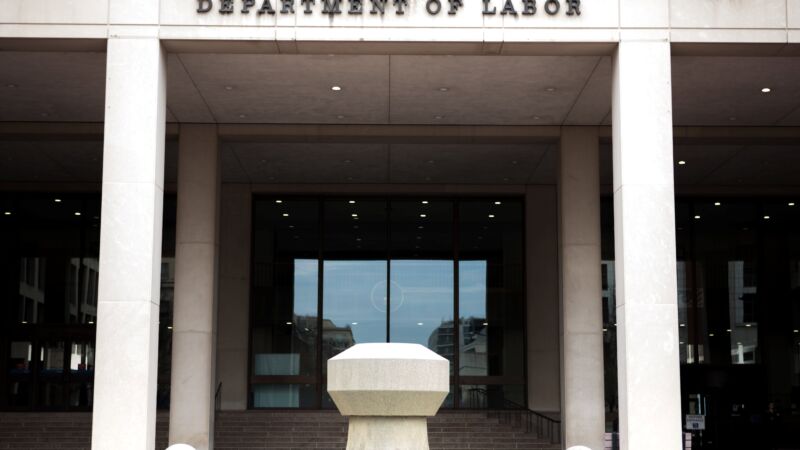On January 10, 2024, the U.S. Department of Labor published a final rule regarding employee or independent contractor classification under the Fair Labor Standards Act (FLSA), which rescinds the more employer-friendly 2021 test implemented under the Trump Administration and returns the DOL’s test for determining worker classification to a multi-factor economic realities test similar to the long-standing test used before 2021.
Simplified rule and origins of the economic realities test
“The Trump-era 2021 independent contractor rule acknowledged the fact that prior to that point in time, basically, there was no DOL rule or regulation,” Anne Sekel, managing partner at Foley & Lardner LLP’s New York law office, began. “For the most part, the way that the economic realities test had formed was through court cases and the precedent that was created by those cases.”
According to the DOL, a series of U.S. Supreme Court cases from 1944 to 1947 “considered employee or independent contractor status under three different federal statutes enacted during the 1930s New Deal era – the FLSA, the National Labor Relations Act (NLRA), and the Social Security Act (SSA) – and applied an economic realities test under all three laws.” The DOL applied a multi-factor economic realities test based on these rulings, which typically include the following six factors:
- Opportunity for profit or loss
- Investments by the worker and the employer
- Permanence of the work relationship
- Nature and degree of control
- Whether the work performed is integral to the employer’s business
- Skills and initiative
“The DOL under the [Trump-Administration] decided to, in their words, simplify the [economic realities] test and focus on two [factors] in particular,” Sekel said. These two factors included the worker’s opportunity for profit or loss and the nature and degree of control over the work being performed. Sekel explained that several comments on the 2021 rule said it made it much easier to designate workers as independent contractors rather than employees.
Efforts to rescind 2021 rule and new rule
Despite efforts by the DOL under the Biden Administration to delay and withdraw the 2021 rule, a federal district court in the Eastern District of Texas issued a decision vacating the DOL’s attempts to remove it. In response, the DOL began the process of crafting a new rule that would again rely on a multi-factor test similar to those items determined by prior court rulings to classify workers as employees or independent contractors.
A proposed rule was issued in 2022, which received more than 55,000 comments. The anticipated May 2023 release date for the final rule was delayed, due in part to the deluge of feedback from stakeholders and other concerned parties. During a January 8, 2024 media briefing on the topic, Acting DOL Secretary Julie Su and other officials from the Labor Department announced the release of the new worker classification rule, which takes effect on March 11, 2024. The DOL’s Wage and Hour (WHD) Administrator Jessica Looman explained that while the 2024 new rule follows the 2022 proposed rule, “several adjustments to the analysis” were made, “including revisions regarding the control factor and the investment factor.”
Other new rule changes
“Included in the various factors that can be examined to determine if a worker is an employee or an independent contractor are the notions of profit or loss, but those are not weighted more heavily than the other four factors,” Sekel noted on the change from the 2021 rule. She added regarding the permanency of the worker relationship that “the new rule actually takes into consideration and discusses seasonal work because often seasonal work is of a short duration, but can be so critical to the business to which it is being provided that it would not be considered independent contractor work.” The 2024 rule specifically says that “this lack of permanence does not necessarily mean that the worker is in business for themselves, instead of being economically dependent on the employer for work.”
Although the 2023 rule is new, Sekel explains that it is very similar to the court-based economic reality factors that have been used for decades. “I think that the DOL made it clear that they don’t want the businesses out there in the world to feel as though this economic realities test is new.” She also said that the multi-factor approach provides “as much of an opportunity to look at factors that weigh in favor of finding someone as an independent contractor as there are opportunities to find that person an employee.”
New rule is similar but best practices should be ongoing
Following the DOL’s announcement of its new worker classification rule, Labor Department officials stressed plans to provide “extensive guidance” so that employers can ensure they remain in compliance with the FLSA following the March 11, 2024 effective date. Sekel thinks that many businesses planned on the long-standing six-factor test to continue to be how the DOL viewed the employer-employee relationship, despite the 2021 rule, so she does not know if she would offer any new or different guidance regarding the 2024 rule and how to prepare for it. However, Sekel did impart some advice that she typically provides to human resource departments or in-house counsel as “the best corporate hygiene” and “best practices on a yearly basis” regarding worker classification.
“Look at the people you pay and look at how you pay them, whether that’s on a W-2 or a 1099, and take a dive into their job description and how their managers treat them,” she began. “There can be job description creep or supervisory creep that infiltrates a relationship and so even if someone started out as what would be considered an independent contractor, sometimes, they can start to look a little bit more like an employee under any test,” Sekel said.
To help prevent such situations, she recommends “designating a few days [each year] to look at who you’re paying, how you’re paying them, and what their job description is and how they are actually treated.” She added to make it part of a business’s “routine” and create a checklist to help makes sure each of the factors are taken into consideration when classifying workers. “That two-factor rule still acknowledges that there were other aspects to a relationship between a worker and a business,” Sekel reasoned.
In addition, because larger employers have multiple departments where it may be possible to miss or lose the company-wide message regarding proper worker classification, Sekel advises pushing “the idea of standardization to make sure that everybody has a working knowledge of the six factors, everybody has a working knowledge of how to write a really good job description so that it’s accurate and it really does capture what’s going to happen – that’s really important.”
To help develop a standardized process and checklist, the DOL added a list of frequently asked questions (FAQs) on the new rule.
Court challenges to the new rule
Since the new DOL worker classification rule was announced in January, a few court challenges have emerged. The first came from a group of freelance writers and editors who claim that the new rule makes it more difficult for employers to treat some workers as independent contractors and believe it is so vague that it violates the U.S. Constitution (Warren, et al. v. U.S. Dep’t of Labor, et al. , N.D. Ga., No. 2:24-cv-00007, 01/16/2024). The U.S. Chamber of Commerce announced its opposition to the new rule in early January, with Marc Freedman, the Chamber’s Vice President of Workplace Policy, issuing a statement claiming the rule is “clearly biased toward declaring most independent contractors as employees” and said the Chamber “will carefully evaluate [its] options going forward, including litigation.”
Sekel said that if the court challenges are successful, there would be a stay of the new rule being implemented and the procedure would revert back to some sort of status quo, which she said could be one of two things: (1) reliance on the 2021 Trump Administration rule or (2) reliance on the 70 years of precedent regarding the multi-factor economic realities test. In the case of the latter, Sekel notes that “it’s not going to look very different from a situation where the rule has actually been implemented.”
Challenges may be moot
She further explained that one of the things the DOL did regarding the new rule’s process was to “split the recession of the Trump-era rule from the notice and comment period and proposed new rule.” Sekel said that because of this, if there was an omnibus challenge, it would be likely that the DOL’s worker classification process would revert back to the status quo and not the 2021 rule. In addition, Sekel does not believe that the current court challenges will be successful “from a procedural perspective.” She explained that there “may be substantive challenges down the line,” but currently Sekel has not seen any such lawsuits.
To learn more about how Checkpoint’s payroll solution can help your business, visit https://store.tax.thomsonreuters.com/accounting/Practice-Area/Payroll/c/2400.








